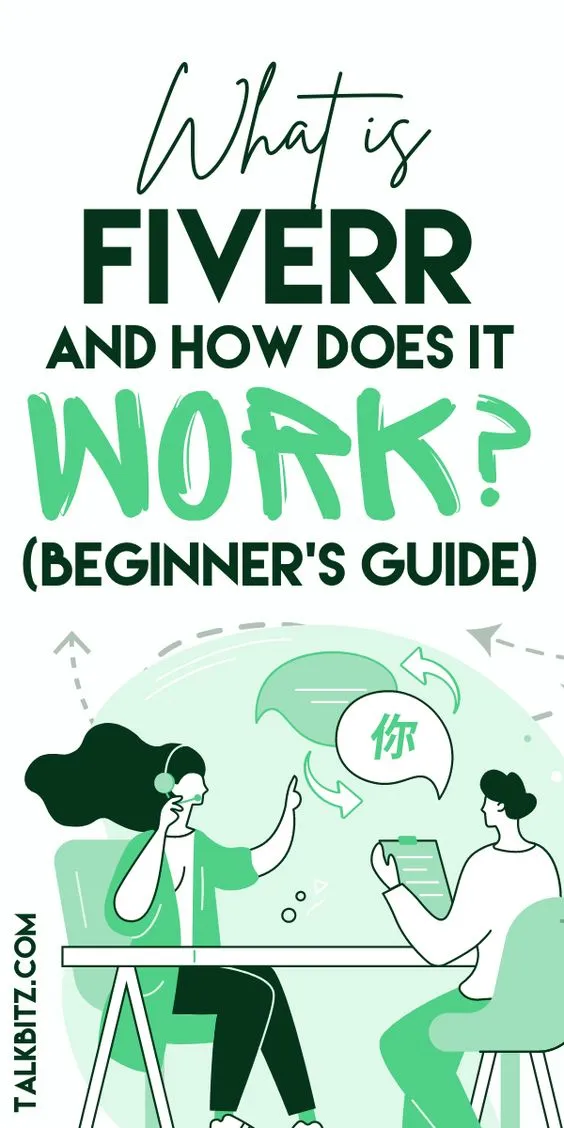Fiverr is an innovative online marketplace that connects freelancers with clients looking for various services. Launched in 2010, it quickly became a go-to platform for services across numerous categories, ranging from graphic design and writing to programming and video editing. With millions of users across the globe, Fiverr empowers freelance professionals to showcase their unique skills while helping businesses and individuals find solutions to their needs.
One of the standout features of Fiverr is its user-friendly interface, making navigation simple for both buyers and sellers. Sellers create "gigs," which are service offerings that clients can purchase. Varying in complexity and scope, these gigs often come with tiered pricing, allowing clients to select packages that fit their budget and requirements. Additionally, Fiverr offers a robust review system that allows clients to assess freelancers based on previous performance, fostering a sense of trust and transparency.
As a platform dedicated to empowering freelancers, Fiverr has implemented various tools and resources to help sellers grow their businesses and improve their services. However, as with any marketplace, it’s essential to understand the associated costs, especially Fiverr's commission structure. Knowing how commissions work can significantly influence your pricing strategies and overall profitability as a freelancer.
Breakdown of Fiverr's Commission Structure

Understanding Fiverr's commission structure is crucial for freelancers and clients alike. Fiverr operates on a transparent fee system, which is important when determining how much a seller will earn after completing a transaction. Here’s a breakdown of how it generally works:
| Type of Transaction | Commission Percentage | Example |
|---|---|---|
| Standard Gigs | 20% | If a gig sells for $100, the seller takes home $80. |
| Fiverr Pro Gigs | 20% | A Professional service sold for $500 means the seller receives $400. |
| Service Upgrades | 20% | Upgrading a $50 gig adds another $10 to Fiverr's cut. |
What does this mean for sellers? Every transaction made through Fiverr incurs a 20% commission fee, which is deducted from the seller’s earnings. So, if a seller offers a gig priced at $200, they'll ultimately receive $160 once Fiverr takes its cut. This may sound steep at first, but it’s essential to consider the value Fiverr provides, such as a ready-made audience and marketing tools.
Additionally, clients are charged a service fee that varies based on the gig price, typically starting at $2 for lower-priced services and reaching up to 5% for higher-value transactions. This means clients should factor in these fees when budgeting for projects.
Understanding this commission structure allows freelancers to set realistic pricing, ensuring they remain competitive while still turning a profit. So, whether you are just starting on Fiverr or an experienced seller, keeping these commission details in mind is crucial for sustaining a successful freelance business!
Also Read This: Does the Person See Your Real Name on Fiverr?
How Fiverr Commission Affects Sellers and Buyers

When it comes to using Fiverr, understanding the commission structure is essential for both sellers and buyers. Fiverr applies a standard commission rate that directly impacts how much sellers earn per transaction, and this can also influence the pricing strategies they use.
For Sellers: The typical commission taken by Fiverr is 20% of the total transaction amount. This means if a seller charges $100 for a gig, they will only receive $80 after Fiverr's cut. This can be quite significant, especially for freelancers who rely on high volume sales. Additionally, this commission can impact how sellers price their services. To maintain their income, they may raise their rates, which can sometimes make them less competitive in a crowded marketplace.
For Buyers: On the buyer's side, the commission structure translates into the final cost of services. While buyers don’t pay the commission directly, the price they see will reflect what sellers need in order to cover Fiverr’s cut. Buyers must keep in mind that they might be paying a bit more for services on Fiverr compared to a direct agreement with a freelancer elsewhere. However, the platform's guarantees and ease of use can justify the extra cost for many.
Ultimately, understanding how Fiverr's commission affects both parties is crucial for making informed decisions. Sellers need to find a balance between competitive pricing and sustainability, while buyers can benefit from looking past the price tag to understand the value they're getting.
Also Read This: What Are Positive Keywords in Fiverr?
Comparing Fiverr's Commission Rates with Other Freelance Platforms

When you're diving into the world of freelancing, it's important to understand how Fiverr's commission compares with other platforms. This insight can help both sellers and buyers choose the best option for their needs.
Fiverr's Rates: As mentioned earlier, Fiverr takes a flat 20% commission from sellers. This rate is quite straightforward, making it easy for freelancers to calculate their earnings. The approach is designed to empower sellers to focus on providing quality services while Fiverr handles marketing and transactions.
Other Platforms: Here's how Fiverr's commission stacks up against a few other popular freelance platforms:
| Platform | Commission Rate | Additional Fees |
|---|---|---|
| Fiverr | 20% | No |
| Upwork | Up to 20% (based on earnings) | Withdrawal fees applicable |
| Freelancer.com | 10% to 20% | Payment processing fees |
| Guru | 5% to 9% | Payment processing fees |
As you can see, platforms vary widely in terms of commission rates and additional fees. For say, Upwork, the commission is tiered based on a freelancer’s lifetime earnings with a specific client. This means the more work you get from a client, the lower your commission becomes.
This information is crucial for both freelancers and clients. While the lower fees on some platforms might be appealing, consider the quality of service, ease of use, and support offered by each platform before making a decision. Fiverr’s comprehensive support and features can sometimes outweigh the higher fees, especially for new freelancers and buyers looking for quick and reliable services.
Also Read This: How to Change Your Profile Name on Fiverr: A Step-by-Step Guide
Strategies for Sellers to Maximize Earnings Despite Commission Fees

Navigating the Fiverr landscape as a seller can be a rewarding yet challenging journey, especially when considering the commission fees that Fiverr takes from each transaction. However, with the right strategies, you can still maximize your earnings and make the most out of your Fiverr experience. Here are some effective strategies to consider:
- Set Competitive Pricing: Research similar gigs and price your services competitively. While you want to make a profit, being too high may deter potential buyers.
- Offer Value-Added Services: Create gig packages that provide extra value, allowing you to charge more while appealing to buyers looking for comprehensive solutions.
- Focus on Upselling: Encourage buyers to opt for additional features or services. For example, if you offer design work, suggest a premium package that includes unlimited revisions.
- Utilize Gig Extras: Fiverr allows sellers to create gig extras. By offering add-ons, you can potentially increase the total sale amount without putting in significant additional effort.
- Build a Strong Portfolio: Showcase your best work in a compelling profile. A strong portfolio can justify higher prices because it builds trust and demonstrates your expertise.
- Engage and Retain Clients: Provide excellent customer service. Happy clients are more likely to return for repeat orders, which can help mitigate the effect of commission fees.
- Optimize for SEO: Use relevant keywords in your gig titles and descriptions to attract more traffic. Higher visibility can lead to more sales, offsetting commission costs.
By implementing these strategies, you can effectively enhance your earnings on Fiverr and navigate the commission fees with greater confidence.
Also Read This: SEO Tool Face-Off: SpyFu vs Market Samurai
Common Questions About Fiverr Commission
Understanding the ins and outs of Fiverr commission can be a bit tricky, especially for new sellers. Here, we address some of the most frequently asked questions to clarify any confusion you may have:
| Question | Answer |
|---|---|
| What percentage does Fiverr take from my earnings? | Fiverr typically takes a 20% commission on each sale. This means if you sell a gig for $100, you’ll keep $80. |
| Are there any additional fees? | No additional fees are charged on top of the commission, but payment processing fees from withdrawal methods may apply. |
| How can I check my earnings and commissions? | You can view your earnings and the deducted commissions in the “Earnings” tab of your Fiverr dashboard. |
| Does Fiverr charge commission on tips? | No, Fiverr does not take a commission from tips given by buyers, which means extra earnings for you! |
| Can I set my own prices for my services? | Yes, you have the flexibility to set your own prices within the Fiverr platform. |
By keeping informed about Fiverr's commission structure, you can make more strategic decisions about pricing and service offerings, ultimately enhancing your overall success on the platform.
Also Read This: How Much Is Fiverr Worth?
Understanding Fiverr Commission: What You Need to Know
Fiverr is a popular online marketplace that connects freelancers with clients seeking various services. While it offers immense opportunities for freelancers, it's crucial to comprehend Fiverr's commission structure to effectively manage your earnings. Here's a breakdown of how Fiverr’s commission works:
1. Commission Rates
Fiverr generally takes a 20% commission on each completed order. This means that if you sell a service for $100, you will receive $80 after Fiverr deducts its fee. Below is a table summarizing the commission structure:
| Order Amount | Commission (20%) | You Receive |
|---|---|---|
| $5 | $1 | $4 |
| $100 | $20 | $80 |
| $500 | $100 | $400 |
2. Additional Fees
Besides the commission, Fiverr may have additional service fees for buyers. However, these fees do not affect sellers directly but can influence clients' decisions on purchasing services.
3. Payment Withdrawal
After completing an order, funds are typically available for withdrawal after a 14-day clearance period. Sellers can choose from various withdrawal methods, including:
- PayPal
- Bank Transfer
- Fiverr Revenue Card
Understanding these elements is crucial for maximizing your profits on Fiverr.
Conclusion: Navigating Fiverr’s Commission for Success
By being aware of Fiverr's commission structure and associated withdrawal processes, freelancers can better plan their offerings and manage their earnings, ensuring a successful experience on the platform.



